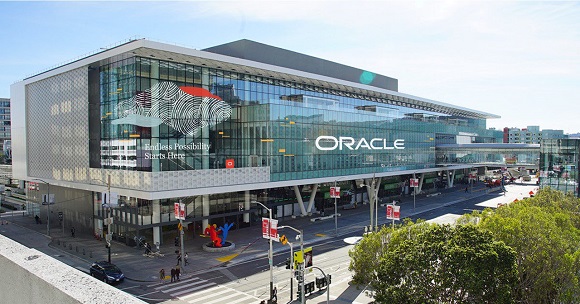Oracle Open World: Autonomy, Acceleration, Assistants & Applications
Oracle used its Oracle Open World 2019 conference to produce its customary barrage of product announcements.
Amidst this volley of customer wins, platform enhancements, application enrichments and datacentre expansion celebrations, the Computer Weekly Developer Network team has naturally gravitated towards the more data-centric elements being tabled here.
As we have noted here already, the drive to provide autonomous intelligence has been key to the way Oracle has now presented its product set.
Although the company is (obviously) primarily known for its database product technology, the autonomous database is just one element of the total Oracle autonomous vision.
Autonomous Linux
Oracle’s Autonomous Linux operating system (OS) is an OS with autonomy. It handles patching, updates, integration requirements and security layer ‘chores’ automatically and performs these tasks without any user involvement.
These are of course the more tedious type of task that can be error prone due to human error mistake. They are also tougher to manage in large-scale cloud environments.
This distribution of Linux is shipped alongside a new product called the Oracle OS Management Service.
“Oracle Autonomous Linux builds on Oracle’s proven history of delivering Linux with extreme performance, reliability, and security to run the most demanding enterprise applications,” said Wim Coekaerts, senior vice president of operating systems and virtualisation engineering, Oracle.
Coekaerts underlines the fact that all developer instances created on the autonomous operating system will be ‘current and continuously up-to-date’ because the operating system patches itself while its running.
Beyond the autonomous database
Speak at the day two keynote, executive vice president for database server technologies at Oracle, Andrew (Andy) Mendelsohn explained how Oracle is working to provide not just a database, but a ‘data platform’ that will allow firms to work with digital assets in new ways.
“You’re all out there gathering data from transactional systems, sensors, telemetry systems etc. That’s good. But the bad news is that that data is out of control, so your company’s data scientists can not get access to the data they need to run the business. The Oracle approach to autonomous database provision provides the patching, scaling and tuning so that we do everything for customers once you just tell us the ‘shape’ of the data i.e. how much compute CPU power they need, how much storage they need and so on,” said Mendelsohn.
Suggesting that data scientists still need more than this, Mendelsohn says that the Oracle Autonomous Data Platform also provides another step towards getting things done more intuitively. Companies need to make it possible for data scientists to be able to view a data catalogue that allows data scientists to be empowered to be able to choose which data they need when… and this is where Oracle is working.
“But doing all the ETL to move all that data from one place to another still take a lot of time, so… Oracle is also shouldering that chore with its platform i.e. ETL is converged to become part of the Oracle Autonomous Data Platform itself,” added Mendelsohn.
Developer tools
Oracle also provides a set of free developer tools so programmer can build and deploy new data-driven applications faster on Oracle Autonomous Database.
Developer tools include Oracle Application Express (APEX) for low-code web application development, SQL Developer Web for user interaction with the database, Machine Learning Notebooks, REST interfaces for access and publishing of database data… and drivers for all popular programming languages.
The Oracle Cloud Developer Image includes tools, choice of development languages, OCI Software Development Kits (SDKs) and database connectors.
As part of its developer-centric news, Oracle will be providing educators and students with the Oracle Cloud Free Tier through Oracle Academy, Oracle’s philanthropic educational programme. The company says the free resources here are free for as long as it is used.
“We are thrilled to offer Always Free Oracle Autonomous Database and Oracle Cloud Infrastructure,” said Oracle’s Mendelsohn. “This enables the next generation of developers, analysts and data scientists to learn the latest database and machine learning technologies for developing powerful data-driven applications and analytics on the cloud.
We’ve talked autonomy and acceleration, so what about assistants and applications?
Assistants, the digital kind
Oracle Customer Experience (CX) Cloud has been augmented with new digital assistants for sales, customer service and marketing professionals, new data enriched B2B sales capabilities, and new industry solutions for telecom and media, financial services, and public sector.
Oracle CX is an integrated set of applications across marketing, sales, service and commerce. The Oracle Digital Assistant is available across the entire Oracle CX Cloud, enabling sales, customer service, and marketing professionals to use voice commands to quickly and efficiently drive outcomes and actions.
With a full baker’s dozen worth of announcements to work through ever day, it’s always tough to know where to focus first at an Oracle event. What we do know is that Oracle is a database company, but it’s also a programmer/developer company and that’s over and above any actual mention of Java.
Code lives on data, databases need code to direct and manage them… databases are code, the role of the data-developer continues to expand.





